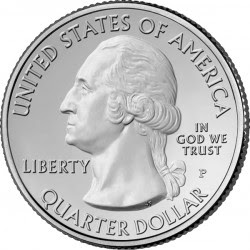Bullion wars have heated up this past weekend as the United States Mint attempted to launch its America the Beautiful Silver Bullion program. The five-ounce monsters were expected to become available through the mint's authorized distributors. Since the mintages were low (33,000 per coin design), the mint became concerned about the potential for price gouging. The mint marked up each coin by a mere $9.75. The following warning letter was sent to the distributors:
Because the United States Mint was only able to produce and make available a limited quantity of each these silver bullion coins in the relatively short period since the authorizing legislation was approved, we anticipate that demand for these coins will be significant. Accordingly, as Authorized Purchasers of the United States Mint, we want to remind you of your commitment, under your Authorized Purchaser Agreement, “to maintain buy/sell premiums for the United States gold and silver bullion coins with as narrow a spread between buy and sell prices as prudent business judgment permits. These premiums are to be competitive with those charged for other bullion coins, considering prevailing market conditions."This was wishful thinking on the part of the mint. American Precious Metals Exchange (APMEX) sold sets of five America the Beautiful bullion coins at $1395 per set. This represents a markup of approximately $130 per coin. After receiving numerous complaints, the mint put the kabash on APMEX's order. The coins are now on hold.
Since the mint had to buy a German press for the minting of the coins, they (and, therefore, the taxpayers) are probably losing money with each coin sold. Meanwhile, APMEX and the other distributors stand to make a fortune. The mint states its goal of "ensuring that the coins will be available, accessible, and affordable to members of the public." By selling all of the coins to a small handful of corporations, they have guaranteed that this will not happen. The best hope is that the mint will sell bullion directly to the public, or at least to Peter Planchet.













